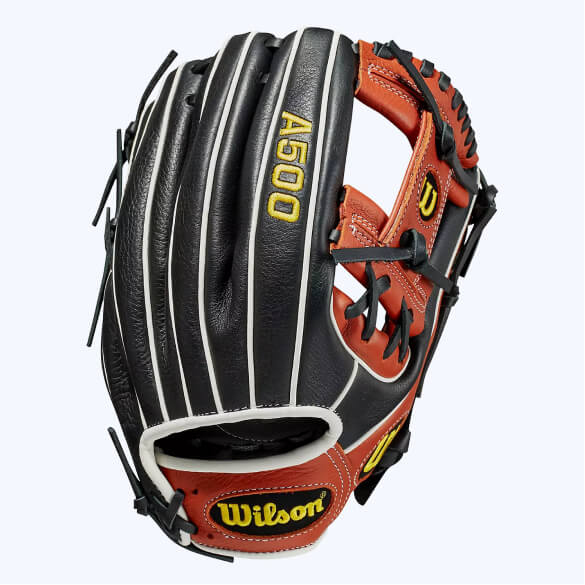Pitching Gloves vs. Batting Gloves: What's the Difference and Why It Matters
 Best pitching gloves on Active Gear Advisor
Best pitching gloves on Active Gear AdvisorPitching gloves and batting gloves serve distinct purposes in baseball. You'll find pitching gloves (Choosing the right baseball glove size) are looser-fitting, made of durable leather, and designed to protect the throwing hand while maintaining ball feel. They're built to withstand repeated use and weather conditions. In contrast, batting gloves fit snugly, blend synthetic materials with leather, and enhance grip while absorbing shock. They're essential for bat control and reducing hand fatigue. Pitching gloves focus on durability and flexibility, while batting gloves prioritize grip and vibration reduction. Both types require specific care routines to maximize their lifespan. Understanding these differences can greatly impact your performance on the field
Key Takeaways
- Pitching gloves protect the throwing hand, while batting gloves enhance grip and absorb shock for better bat control.
- Pitching gloves are made from durable leather, whereas batting gloves often blend synthetic materials and leather for flexibility.
- Pitching gloves have a looser fit for wrist movement, while batting gloves fit snugly to minimize slippage.
- Pitching gloves are designed to maintain ball feel, while batting gloves focus on improving grip and reducing vibrations.
 Active Gear Advisor’s top baseball glove picks
Active Gear Advisor’s top baseball glove picks- Pitching gloves generally last longer, with proper care extending their lifespan over several seasons.
Purpose and Function
When it comes to baseball gear, pitching gloves and batting gloves serve distinct purposes on the field. Pitching gloves primarily function as protective gear for pitchers, shielding their throwing hand from blisters, calluses, and weather-related discomfort - Choosing the right baseball glove size. You'll find that these gloves are designed to maintain a consistent grip on the ball while adapting to various weather conditions
Batting gloves, on the other hand, focus on grip enhancement. Choosing the right Choose Baseball Glove Size glove size and shock absorption. If you beloved this article and you would like to receive more info with regards to How To Select A Baseball Glove For Pitching nicely visit our own site. They're engineered to improve your hold on the bat, reducing the risk of slippage during swings. The enhanced grip allows you to maintain control and power throughout your batting motion. Additionally, batting gloves provide a layer of protection against vibrations and impacts, minimizing hand fatigue and potential injuries
Both types of gloves offer weather adaptation features, helping you perform effectively in different conditions. Pitching gloves often incorporate moisture-wicking materials to keep your hand dry, while batting gloves may use tackified surfaces for improved grip in wet conditions. By understanding the specific purposes of each glove type, you can make informed decisions to enhance your performance and safety on the baseball field.
Materials and Construction
The distinct purposes of pitching and batting gloves are reflected in their materials and construction. Pitching gloves (Choosing the right baseball glove size) are typically crafted from durable, high-quality leather types such as cowhide or kangaroo leather. These materials provide excellent protection and durability, crucial for the repetitive stress of pitching. You'll find reinforced padding in key areas, particularly around the palm and fingers, to absorb shock and reduce the risk of injury
In contrast, batting gloves are often made from a combination of synthetic materials and leather. The palm area usually features tackier leather types. Choosing the right baseball glove size, such as goatskin or sheepskin, to enhance grip on the bat. The back of the glove is often constructed with breathable, flexible materials like spandex or nylon for improved comfort and range of motion
Stitching techniques also differ between the two glove types. Pitching gloves employ sturdy, double-stitched seams to withstand the constant friction and pressure of gripping the ball. Batting gloves, however, use lighter, more flexible stitching methods to allow for greater dexterity and feel. Choosing the right baseball glove size. This construction difference guarantees that each glove type effectively serves its intended purpose while prioritizing player safety
Fit and Sizing
Proper fit and sizing are vital factors that distinguish pitching gloves from batting gloves. When selecting a pitching glove, you'll notice it's designed to fit more loosely on your hand, allowing for better wrist movement and finger flexibility - Choosing the right baseball glove size. This looser fit is essential for executing various pitches with precision and reduced strain
In contrast, batting gloves should fit snugly (Choosing the right baseball glove size), like a second skin. This tight fit guarantees maximum grip on the bat and minimizes slippage during swings. You'll find that most batting gloves offer fit adjustments, such as Velcro wrist straps, to customize the tightness
To confirm you're getting the right size, consult the manufacturer's sizing charts. For pitching gloves, measure the circumference of your throwing hand just below the knuckles. Batting glove sizing typically involves measuring from the tip of your middle finger to the base of your palm.
Performance Impact